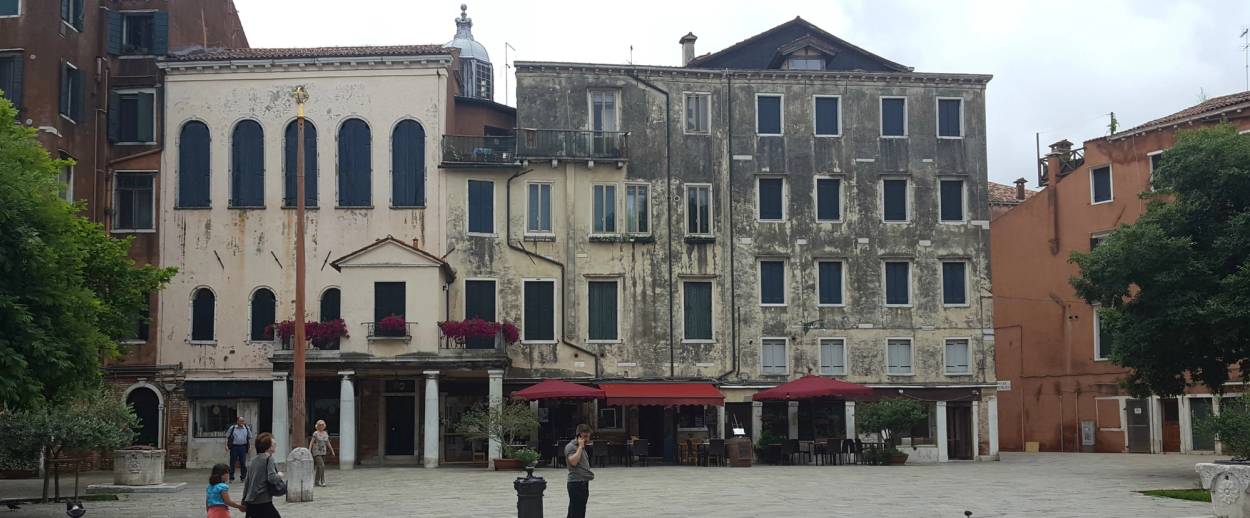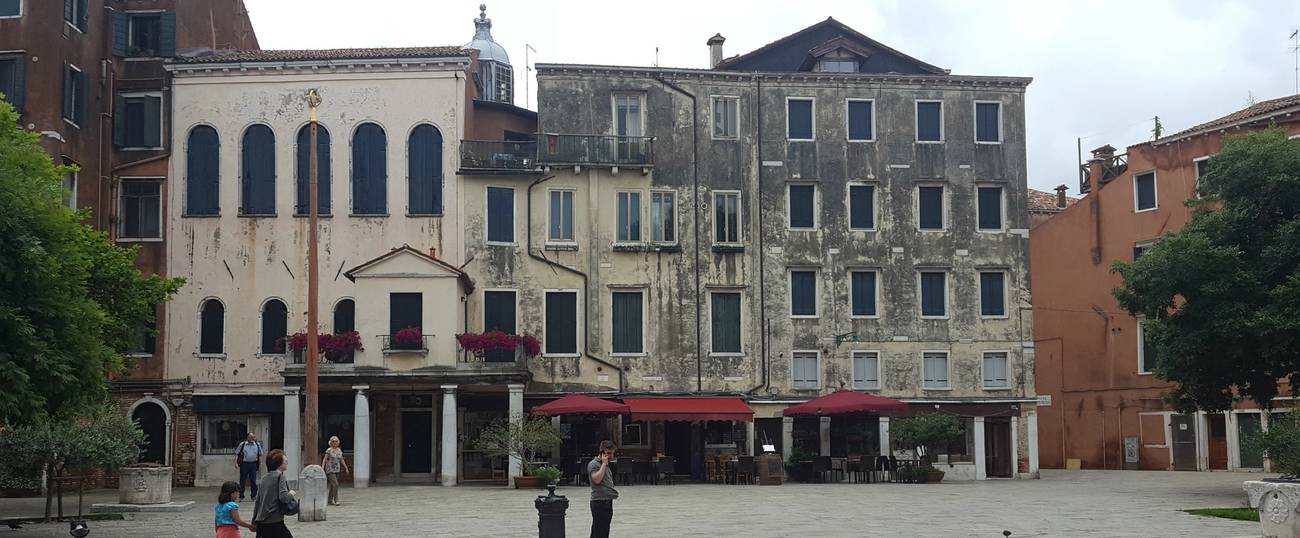Celebrating 500 Years of Jewish History in a Venetian Palace
The recently opened exhibition ‘Venice, the Jews and Europe 1516-2016,’ is part of dozens of events to commemorate the 500th anniversary of the city’s Jewish Ghetto




After climbing the famed golden staircase at Venice’s Palazzo Ducale, I came upon the princely apartment of the bygone Doge (chief magistrate) and was greeted by a rumbling, clanking sound from within. The noise was the audio component of a dome-shaped installation that glowed a fiery orange. The piece, which greets visitors upon entering an ambitious new exhibition called “Venice, the Jews and Europe 1516-2016,” hosted in the very apartment, was meant to evoke a foundry, where metals are poured and cast.
The exhibition, which opened June 19, is described by organizers as “the highlight” of dozens of events commemorating the 500th anniversary of Venice’s Jewish Ghetto.
On March 29, 1516, the Venetian Senate ordered the Jews of Venice to move to the site of an old foundry to prevent them from “roaming about at night.” In the Venetian Italian of the time, “foundry” meant “geto,” initially pronounced with a soft “g.” And so, if the etymology is indeed correct—some aren’t so sure—the world’s first Jewish ghetto was born.
Five hundred years later, the ghetto still stands; in 2014, millions were pledged in restoration efforts. While some of the five extant synagogues are used for services and even weddings for foreign Jewish couples, the ghetto is mainly the province of tour groups and kosher bakeries. And, in a sad testament to the resurgence of anti-Semitism in Europe, armed Italian soldiers are permanently stationed in the central square.
To the exhibition’s credit, it is not a never-ending sob story dissecting the persecution of Venetian Jews. Walking through the rooms on opening day, I noticed how different it was from the tour of the ghetto itself, which I’d gone on a few days earlier. The tour guide strongly corrected someone who called the events of 2016 a “celebration.”
But I too felt more celebratory than commemorative while going through the exhibition, which featured intricate laser scans of the synagogues, beautiful silver ritual objects, music, paintings, some early examples of Hebrew printing and publishing that flourished in Venice, a series of clips showing actors portraying Shylock in filmed versions of The Merchant of Venice, and an entire section dedicated to an unsung woman named Sara Copio Sullam, also known as the “poetess of the Ghetto.”
The curator, Donatella Calabi, told me in an email that it took three years to collect all the materials from museums, libraries and archives around the world. Given the breadth of the display—there were original books with Hebrew typography and old sketches of the slim apartment buildings built in the confined spaces of the ghetto—I wasn’t surprised.
Through this cornucopia of research, the exhibit tells the story of the Venetian Jews, migrants from Germany, Spain, France, Portugal, and the Levant, who lived in the ghetto. They had to pay for their own Christian guards who circled the northern, canal-enclosed island in an area called Cannaregio, locked the gates at midnight, and opened them at dawn with the toll of a bell in St. Marks church, which signaled the start of the business day. Once on the outside, Venice’s Jews were forced to wear yellow hats and engage in a limited number of professions, including, of course, moneylending.
In 1797 with the arrival of Napoleon, the Venetian Republic fell, along with the gates of the ghetto. However, by the start of World War II, the population had decreased significantly from a peak of approximately 5,000. Italy’s race laws must have caused further damage, and hundreds also perished during the Holocaust. Today, around 450 Jews remain in Venice. Most of them do not live in the ghetto.
‘Venice, the Jews and Europe 1516-2016’ runs until November 13. The cost is 21 euros when combined with a general entrance fee to the Palazzo Ducale.
Previous: Boutique Italian Museum Explores History of Lecce’s Medieval Jews
Ceremony in Venice Marks the 500th Anniversary of the First Jewish Ghetto
Ruth Bader Ginsburg Will Make a Cameo Surrounding Production of ‘The Merchant of Venice’
Related: A Jewish Ghetto Worth Saving
Joe Freeman is a Southeast Asia-based journalist whose work has appeared in The Washington Post, Foreign Policy, The Guardian, The Christian Science Monitor, The Phnom Penh Post, and the Nikkei Asian Review.